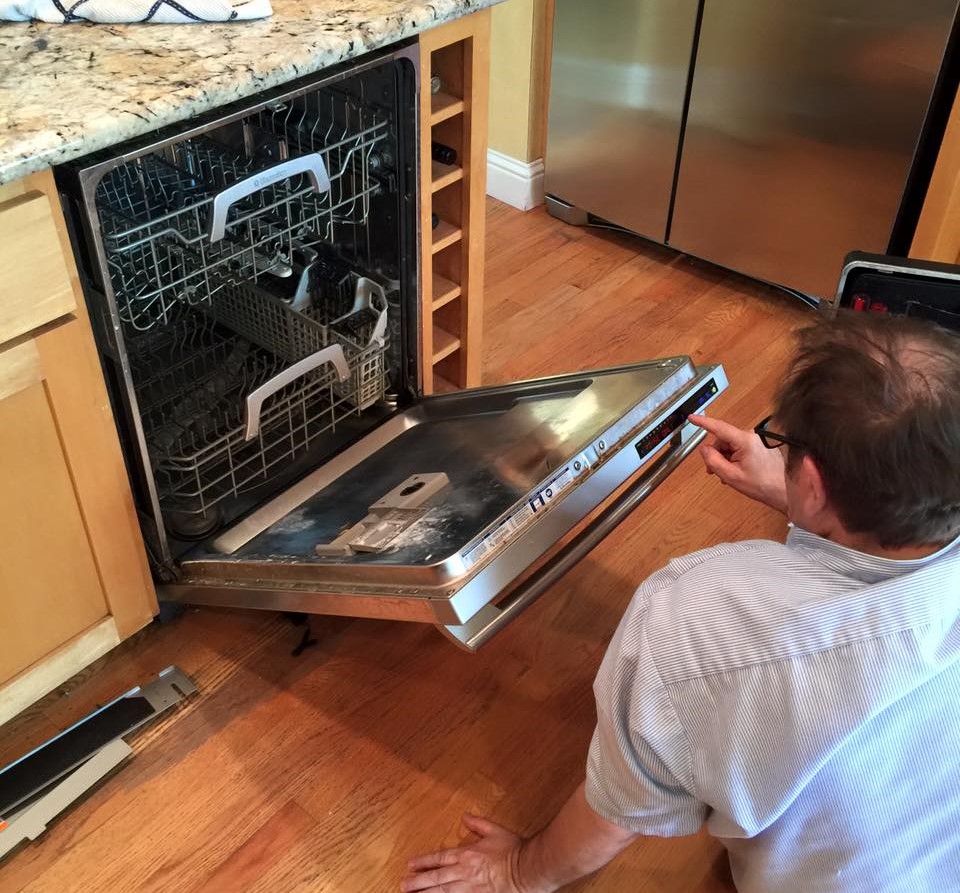
Are you having an issue with your dishwasher? Read on to learn three common dishwasher problems and simple hacks for resolving them.
1. Malfunctioning detergent dispenser
Whether it won’t open, won’t close or breaks off entirely, a malfunctioning detergent dispenser can be frustrating to deal with and expensive to repair. Fortunately, there’s an easy solution: switching from liquid detergent to dishwasher tablets. Unlike detergent, which goes all over the place if it’s not contained in a compartment, a tablet can simply be placed at the bottom of the dishwasher before the wash cycle begins.
So, how does it work? A tablet contains bleach, enzymes and a rinse agent. Each of these ingredients is encapsulated within a layer of plastic that melts at a specific temperature. For example, the plastic encapsulating the enzymes might dissolve at 120 degrees, whereas the plastic encapsulating the bleach might dissolve at 160 degrees. This gives the enzymes time to work inside the dishwasher before the bleach is dispensed, which kills the enzymes along with odors and germs. Finally, the rinse agent is dispensed, which completes the cycle and leaves the dishes clean.
2. Dish soap in the dishwasher
If you’ve ever run your dishwasher with dish soap instead of detergent, you know the outcome. The sudsy character of the soap combined with the washer’s powerful mechanized spray basically creates a bubble bath for your dishes. However, this isn’t as fun as it sounds. When an excessive amount of suds builds up in a dishwasher, it can actually push water out of the machine and cause a leak. To make matters worse, once dish soap is in your dishwasher, it can be difficult to remove.
Fortunately, there’s a simple solution to this problem: olive oil. This common household substance can be used to neutralize the effects of dish soap in your dishwasher. Here’s how to apply it:
- Insert two or three tablespoons of olive oil into your dishwasher.
- Run the dishwasher for 30 to 60 seconds.
- Stop the cycle and drain the dishwasher.
- Repeat steps 1-3 another two to three times as needed.
3. Odors and grime
A dishwasher cleans dishes, but sometimes it needs to be cleaned itself. If your dishwasher is emitting an unpleasant odor or has visual mold and grime buildup, it’s past due for a cleaning. Ehsan Rezaei, owner of Molly Maid of Sonoma County, suggests the following method:
- Fill a coffee cup with vinegar and place it on your dishwasher’s top rack. (The dishwasher should be otherwise empty.)
- Sprinkle some baking soda inside the dishwasher.
- Run the dishwasher on its heavy washing cycle.
After the cycle is finished, open your dishwasher and take a look—you’ll be surprised by how clean it looks and smells. For the best results, make dishwasher cleaning a proactive routine rather than a reactive remedy.
Do you need professional help with your dishwasher issue? Find a Diamond Certified appliance repair company in your area
